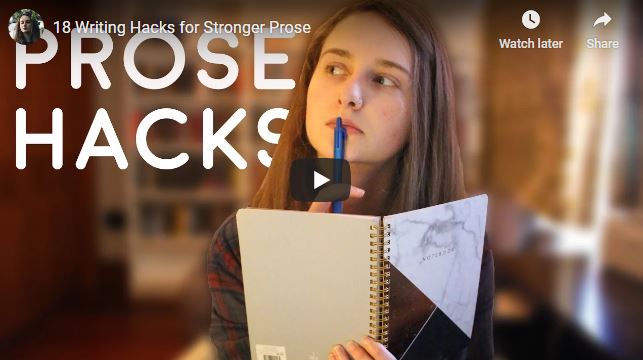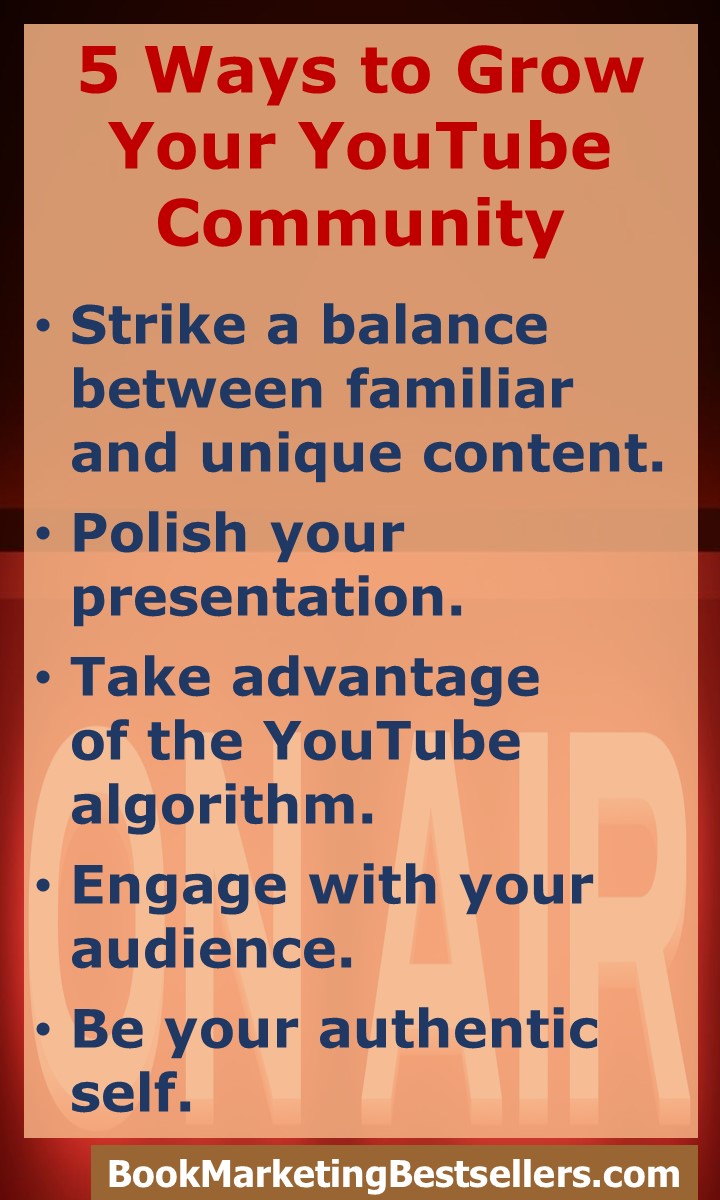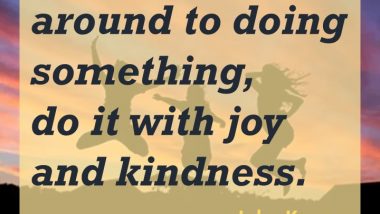Guest post by Shaelin Bishop
I started my personal YouTube channel, Shaelin Writes, at the beginning of 2013. Back then I was mostly doing book reviews (which I still do from time to time), and over the next two years, I acquired about 500 subscribers. In 2015, I diversified by switching the main focus of my videos to writing. That’s when my subscriber rate really began to skyrocket.
I hit 10,000 subscribers in the summer of 2017. After that, I had extremely rapid channel growth and hit the 20,000 mark within a few months. Now, another three years (and one long hiatus) later, I’ve acquired nearly 70,000 subscribers on my personal channel and over 50,000 for publishing startup Reedsy’s YouTube channel, where I am the main content creator.
But, as succinctly as I’ve summarized it here, this growth didn’t happen overnight. I had to carefully script, record, and edit my videos, especially when I began working for Reedsy, to establish a consistent, engaging tone, to ensure I was meeting viewers’ expectations, and to expand into new areas to continue gaining subscribers on both channels. Here, I’ll outline my best tips to help you do the same, so you can grow your channel and hit your own milestones!
1. Strike a balance between familiar and unique content.
Well-branded videos on topics that viewers are already familiar with—and want to learn more about—are crucial to draw new subscribers. Though you don’t want to make a video that’s already been done by countless other creators in your sphere, approaching a well-known subject can really boost your visibility.
That said, it’s the unique and personal content your channel offers that will define your niche on YouTube and keep your subscribers interested. It’s true that working with a completely original video concept no one’s done before might not attract new viewers, but it’s often what excites your existing fanbase!
To give a couple examples of that first type of familiar content, some of my most-viewed videos that continue to attract the most subscribers are ones like Debunking 10 Common Writing Tips and 18 Hacks for Stronger Prose. These are topics that writers frequently search for — with clearly identifiable titles.
On the other hand, when I’ve done videos that are a bit more personal and unusual — like live writing sessions, with all my typos included — they haven’t tempted as many new viewers. But my existing subscriber base loved them, and I’ve since gotten tons of requests for similar videos! This goes to show the importance of balancing the familiar with the novel, in order to please both your existing fanbase and your potential future fans.
When in doubt about what your subscriber base might find interesting, I’ve found the best way forward is to simply ask. Put out a call for requests at the end of a video or ask on social media (which you should always link to in your video descriptions, of course).
Or, if you’re more concerned about your wider target audience, you can’t go wrong studying other popular YouTubers in your niche to see what they’re doing — though again, don’t copy them exactly. I like to keep a running list of video topics from fellow BookTubers and writing/publishing YouTubers that I’ve enjoyed, but wait until I have a unique approach on the subject to commit to making a video. For example, I might see a video discussing a certain set of tropes in YA fiction, then create a video about those same tropes a month later in the context of a book I’ve just read, using examples from that book to support my own take.
2. Polish your presentation.
Down the line, you may want to purchase more professional (read: expensive) equipment to make your videos. But, for those who are just getting started or who don’t have the budget for that right now, here are some hacks to make your content look more polished:
Invest in a decent camera. Even if you can’t quite splurge on a DSLR, you can buy an HD Camcorder for less than $100, and the quality will be noticeably better than that of a webcam.
Personalize your space. Add a few decorative touches to your background — even something basic like a bookshelf with your favorite titles, a couple of houseplants, or a string of fairy lights. A lively background can boost your videos’ aesthetic. Even a smidgen of personality is way more appealing than a blank wall.
Work on your intro and end screen. Quick and easy to make, these provide a personal feel while simultaneously making your videos seem more cohesive and professional.
Make exciting thumbnails. My analytics have taught me that viewers are less likely to click on a video that doesn’t have a custom thumbnail, even if the title and content are solid. Having an attractive thumbnail is how you grab someone’s attention when that video shows up in their recommended feed, so make sure yours are top-notch — colorful, annotated, and popping with personality. (For authors hoping to use videos to sell your book, make sure your beautiful cover is visible in the thumbnail!)
Edit yourself. Few people can speak for ten minutes straight without making a mistake. Luckily, most computers these days come with editing software that you can use to cut out mistakes and pauses, and streamline your videos so they’re easier and more pleasant to watch. (I use Final Cut Pro nowadays, but I previously used iMovie. I also know a few people who successfully use Windows Video Editor.) The only exception to this rule is something like the live session I mentioned before, which provides a rare, unfiltered, and hopefully relatable look into your life.
3. Take advantage of the YouTube algorithm.
The YouTube algorithm remains somewhat mysterious, even to experienced creators — it’s constantly changing and the details of how it works aren’t common knowledge. But it’s vital to at least try and understand it, since the algorithm determines what people see in their related and recommended lists.
One key thing to remember (and an encouraging reminder for new YouTubers) is that the algorithm favors quality over popularity. Therefore, watch time is given greater priority than view count. It also favors impressions (how often your thumbnails are shown on YouTube) over clicks and viewer engagement. With that in mind, here are a few more pieces of advice:
Optimize your video’s SEO with an eye-catching title, description, and tags with strong keywords. Keep in mind that clickbait in your title isn’t necessarily good, since viewers will probably stop watching when they realize they aren’t getting what they came for. Also, in terms of SEO, if you have a website or blog where you write on related topics (this goes out to those of you with author blogs), be sure to embed your videos in relevant posts to endorse them with your site’s authority.
Steer clear of long videos unless you have a super-loyal subscriber base. The longer your video, the less likely people are to watch until the end — and because of the algorithmic weight placed on watch time, this can seriously hurt you in the long run. You may be able to get away with lengthier content once you have a loyal audience interested in hearing you talk, but when just starting out, try to keep your videos under 10 minutes (ideally around 3 to 5 minutes).
Pay attention to the analytics for each video. This is especially pertinent if you have poor watch times, as you can see exactly where viewers are dropping out. Analytics help you learn what kind of presentation and content keeps viewers intrigued, so you can tweak your approach and style if necessary.
Set a realistic posting schedule. A lot of new YouTubers overload themselves by setting goals that are too lofty, such as putting up three videos a week. This frenetic schedule will burn you out quickly if you’re not accustomed to regular video-making, especially if you’re doing it on top of another job (like, for example, writing or promoting a book). Instead of shooting for the moon, figure out what’s feasible for you and commit to that schedule — remember, consistency is important to your subscribers.
4. Engage with your audience.
Viewer engagement isn’t just a factor in the YouTube algorithm; it’s also one of the most rewarding aspects of having a YouTube channel. There are many small and satisfying ways to engage with your community, like leaving polls for them to vote on in your cards, or nailing your CTA at the end of each video (which Nick Nimmin talks about in greater detail here).
However, engagement all comes back to the comment section, where your community thrives. Although it may be difficult to respond to every single comment, set aside time to reply to as many as possible. More than anything else, this will help you directly connect with your viewers. And it works both ways: you can also use their comments to get ideas for your next videos, based on their suggestions or where they respond most positively.
As your channel grows, you’ll find new ways to interact with your audience, such as through livestreams, giveaways, or collaborations with fellow creators. You can also take ideas from your viewers based on what they want — for example, my audience has requested that I set up a Discord server so that we can all communicate live.
I’ve also started doing more live writing sessions on the Reedsy channel lately, along with my colleague Jenn. In fact, we just wrapped up a series of NaNoWriMo write-ins where viewers watched and worked with us as we attempted to hit our word count goals! People chatted in the sidebar about where they were tuning in from, what they were writing, how far along they were, etc. We also featured some comments in live pop-ups on the video, which was great for positive engagement (everyone likes to be in the spotlight, even if just for a moment).
If your niche lends itself well to live events, give it a try, especially once you have a decent-sized audience. Even if you don’t think you’re a strong presenter or that many people will sign up, give yourself the benefit of the doubt — perhaps you can have a guest speaker or do a Q&A with someone else, which takes the pressure off you and fosters a fun, unusual experience for your subscribers. And in terms of viewership, remember that once a live event is over, it doesn’t just disappear! It still goes on your channel, and people who may have missed the live event or want to see past ones can still view it.
5. Be your authentic self.
“Be yourself” may be the most cliché advice on building a YouTube channel (and for dating/job interviews/everything), but it’s absolutely true — especially if you make popular educational content like I do, as it’s the easiest way to distinguish yourself from the pack.
Indeed, viewers flock to YouTube because creators’ personalities make their videos way more fun and less work than reading an article. If you deliver information like you’re reading a textbook, you’re not making use of the platform’s purpose, which is to demonstrate that you’re an individual person with thoughts and opinions.
To my immense surprise, the videos that grew my channel exponentially in 2017 were not the professional, instructional craft ones, but rather the videos where I casually chatted about my own writing projects and process! People liked that I was candidly sharing my struggles and successes with regards to writing and publishing a book, especially since they could relate to it themselves. If you’re comfortable sharing about your current projects, it’ll be much easier to engage and connect with your audience.
Of course, it takes time to get comfortable in front of the camera — but again, there’s nothing wrong with sharing your personal journey as you grow your channel. Once you become more confident in filming, it becomes more and more natural to let your personality shine through and engage with your audience — not as just another YouTuber, but as yourself.

About the Author
Shaelin Bishop is a longtime BookTuber and content creator for Reedsy. She’s been a part of the YouTube community for almost eight years and has produced over 400 videos on writing craft, self-publishing, and doing book reviews.
Resources
39 Reasons Why You Should Write a Book
How Do I Get My Books Published?
The I-Don’t-Have-Any-Time Hour-a-Day Book Marketing Plan
The Ultimate Guide to Social Media Hashtags for Book Authors (391 author hashtags)

About John Kremer
John Kremer is author of 1001 Ways to Market Your Books, the Relationships Matter Marketing program, and many other books and reports on book marketing, Internet marketing, social media, and book publicity. -- John Kremer on Book Marketing.

